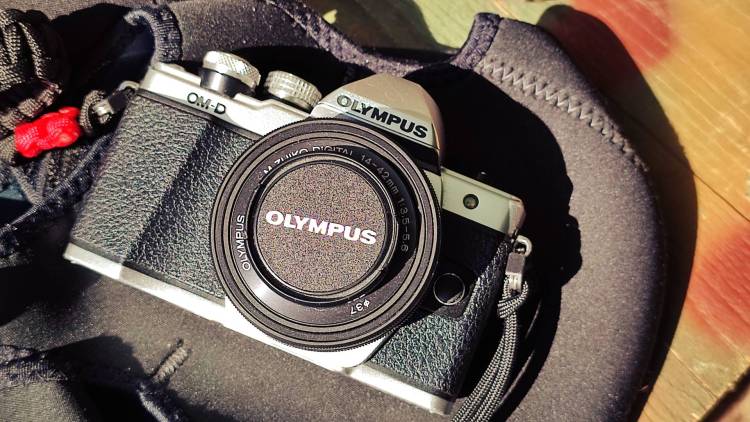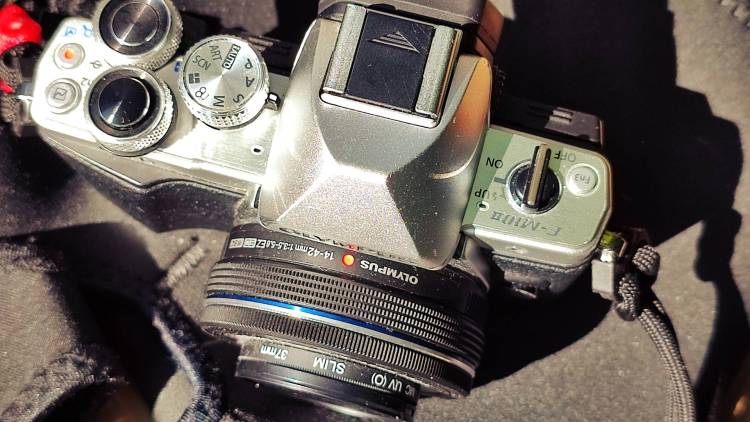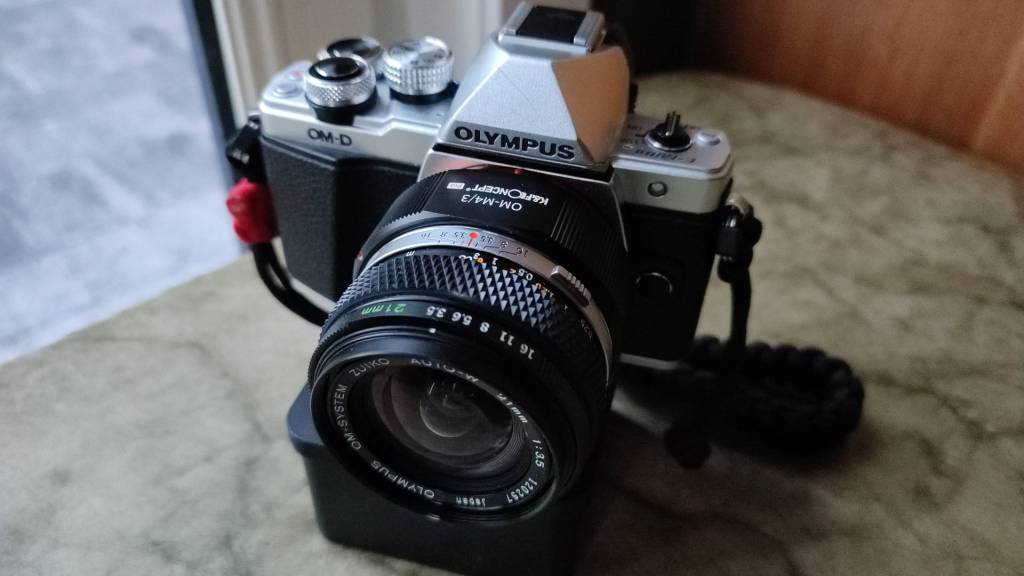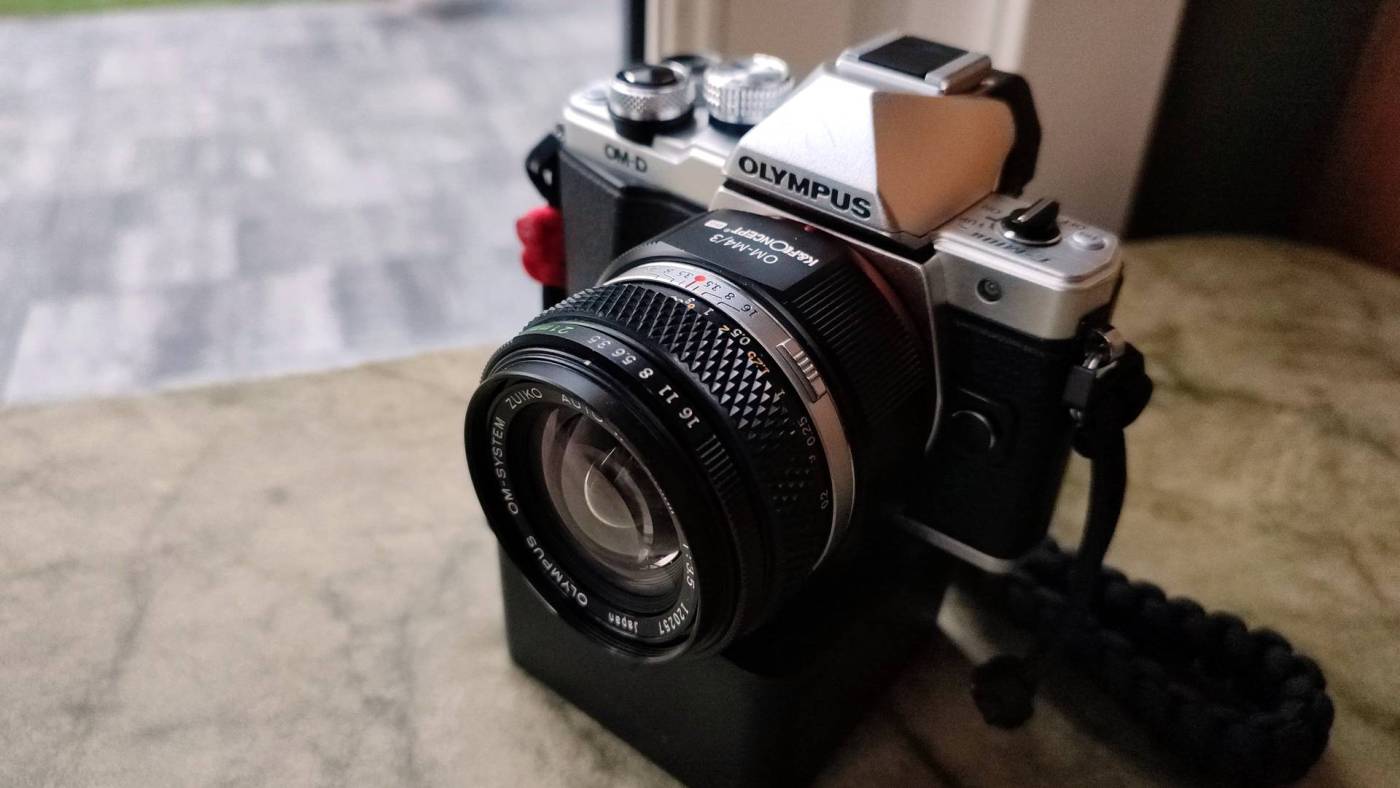It was the Olympus E-M10 Mark I that made me discover the advantages of the M4/3 system.
This camera has 3-axis image stabilization and a crop factor of two due to the characteristics of the sensor.
In the beginning I connected this camera to my manual Olympus Zuiko OM lenses, more specifically the OM Zuiko 300mm f4.5, via an adapter.
It quickly became apparent that this compact stabilized combination was great for wildlife photography.
But the Olympus E-M10 Mark I does not have a “silent shutter”- which is a must in nature, nor does it have a fast electronic shutter.
Also no 5-axis image stabilization that my X-H1 does have.
So, this is where the upgrade to the Olympus E-M10 Mark II comes in.

Why the Olympus E-M10 Mark II and not the Mark III version ?
Well, the more time passes, the cheaper older models get.
Nowadays you can buy an Olympus E-M10 Mark II for around €200, while the Mark III is still easily sold for twice that amount.
And then a choice is quickly made.
The Mark III does have advantages over the Mark II, but it’s up to you to determine whether these improvements are worth the extra cost.
The Mark III is faster, 14fps vs 8fps – more focus points, 121 vs 81 – and has a higher video resolution – however, there are features on the Mark II version that are no longer on the Mark III version, if you are really interested in an Olympus E-M10, look up the comparison in Google via Olympus E-M10 Mark II vs E-M10 Mark III. You will be surprised that the E-M10 Mark II is more popular.
For me, the Mark II is fast enough, I only use one focus point, and 1920 FHD video is enough for me.

But why buy an entry level camera when you already have an advanced Olympus, the EM5MKII ? Well, the EM10MKII has its advantages : Flip up screen instead of a fully articulated screen (better for street photography), Pop up electronic flash, it is smaller and lighter which makes it more interesting for street photography. Also as a backup camera because it is easier to put away, and it is even cheaper than an EM5MKII.
But not only is it smaller than the EM5MKII, it’s even smaller than a Fujifilm X-T1 ! That, together with its other qualities, makes it a great camera to have with you all the time. It’s an Every Day Camera, which has a better image quality than the TG6, and can also be equipped with lenses without taking up too much space. Equipped with the pancake 14-42mm lens, you already have a lot of options.

That, of course, got me thinking.
The reason I like the fujifilm X-T1 is because it has dedicated dials,
and the Olympus is equipped with the well-known PASM dial.
But when it comes to using the camera with old lenses, the little Olympus also has its advantages – more specifically internal image stabilization, which the X-T1 does not have, and is also equipped with focus peaking and a better magnification than the Fuji.
Honestly, the longer I spend time with Olympus cameras, the more I love them !
Olympus E-M10 II Specs:
- 16MP – Four Thirds CMOS Sensor
- ISO 200 – 25600 ( expands to 100)
- Micro Four Thirds Mount – Crop Factor 2
- Five stops Sensor-shift Image Stabilization
- 3.00″ Tilting Screen
- 2360k dot Electronic viewfinder
- 8.0fps continuous shooting
- Full HD – 1920 x 1080 video resolution
- Built-in Wireless
- 390g. 120 x 83 x 47 mm – so actualy 80 grams lighter than the EM5MKII
- For more specs. visit https://cameradecision.com/review/Olympus-OM-D-E-M10-II





Discover more from Open Source Photography
Subscribe to get the latest posts sent to your email.





What a lovely camera. I love my Olympus OM-10 and this looks very similar. I’ve been looking at getting a micro four thirds camera myself, a small Lumix LX100.
LikeLiked by 1 person
A Lumix LX100 is a great camera !
LikeLiked by 1 person